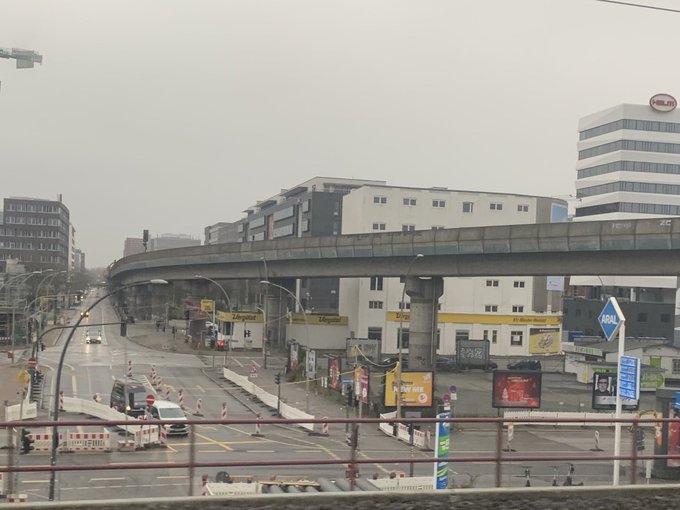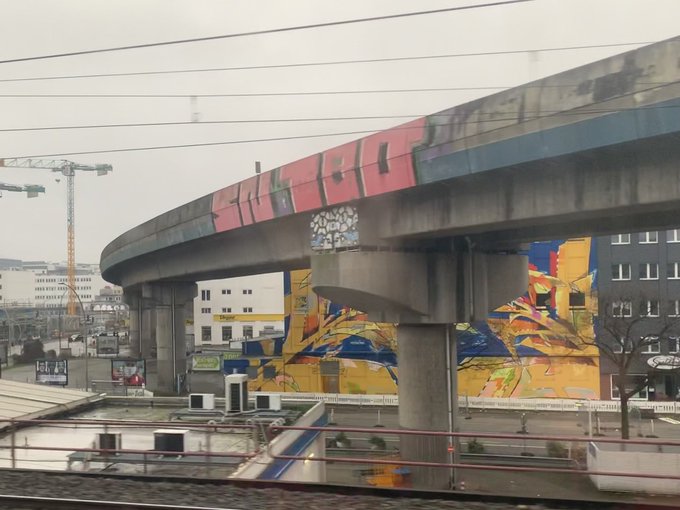First off, happy new year to everyone! 2020 was a rough year for everyone, so let’s hope that 2021 will be easier for everyone.
If you’ve been following the blog for years now, you might have noticed how I said phase 2 of the REM rail project has been in the works for a long time. Of course, some people did not believe me or were skeptical about it. On December the 15th, 2020, CDPQ infra, along with the government of Quebec and Montreal announced the much awaited phase 2 of the REM project, which would see the rail start from Robert Bourassa downtown and have two branches, one heading up to Montreal-Nord and the other Point-aux-Trembles. This is a much needed project as the East end of Montreal does lack the adequate transport in proportion to their population.

The Specs
REM de l’Est will consist of 23 stations across 32 km of double track. Like the first phase, it will be all electric and departures will be every 2 to 4 minutes at peak hours. This also means faster access to the downtown core for people who live in the East, as most rely on bus routes (and sometimes more than one) to access metro stations, which leads to longer commute times. The project is estimated at $10-billion CAD, with construction estimated to start in 2023, with all lines opening by 2030. By 2030, Montreal would have 100 km of new rail track, connecting the West, East and regions within the Greater Montreal Area.

My thoughts on the project
Like most people, I was insanely excited when the project was first announced. Not only does Montreal need more transit access, but this project, along with REM phase 1 will make the city the envy of North America when it comes to transit. We cannot forget that this year, we will see another announcement of a line extending to the East end of Laval, which again creates more accessibility. And the fact that by 2030, 100 km of new track would be added to the city is impressive. The only other areas with massive transit expansions in North America at the moment have been Washington DC and Austin, TX to name a few. Another thing that excites me is that it will revitalise the East end of Montreal, which does need new development and TLC. Most of the developments in Montreal, like most major cities have taken place in the inner core. However, with this project, we will see more development outside the core. Yes, this does mean condos will pop up in the East end, but that means more people will want to move to these areas, which will help stimulate the local economy there. You also have development strategy’s for another tech pole in the East end, which will attract more tech companies to Montreal by the means of tax credits. This will also help spread out nodes and companies all over the city, rather than concentrate them in Mile-End/St. Laurent borough only. The East end is still industrial heavy and needs injection of modernisation and new companies to move in the area. It is inevitable, but now is the perfect time to start. The REM de l’Est will help fast track this process, as it did with developments in the downtown core, South Shore and West Island.
Then there are the other economic and environmental benefits this project will provide. According to CDPQ infra, the project will create 60,000 jobs during construction, with an infusion of $6.3 billion CAD into the Quebec economy. This is huge considering COVID has destroyed our economic progress and made us go from billions in the black, to a $15B dollar deficit. 60,000 jobs created during construction is also a huge deal, considering construction jobs come with relatively high salaries. This means more employed people in a rough time, which will increase the tax base and help stimulate economic growth via employment and spending plus the collected income taxes. Include this with the economic infusion of the project and it just shows how needed this is. Environmentally, the project is projected to reduce 35,000 tonnes of GHG per year and reduce the amount of cars on the road. This in turn will help reduce not only emissions, but congestion, heat islands and improve the local environment. Fewer cars on the road means less traffic + congestion, which means faster travels, a more productive workforce, which means a better and more efficient economy. Everybody wins
Criticism/Concerns
Of course, no matter how excited I am for this project, there are some concerns I have (along with others) that I want to address. The first is the price tag of $10 billion dollars. Of course, this is due to the project having more track underground than phase 1 of the REM. However, the first phase was estimated at $5.9B and then prices went up (like all projects do) to $6.5B. This is a huge jump compared to phase 1, and of course it will go up again by 2023. I’d wager the project by 2023 will hit anywhere between $11 to $11.5B by then.
The second criticism is the trains themselves only being 2 cars in length. The first phase will have 2 during off peak and 4 during peak, with long stations to accommodate for this. However, the REM de L’est will not have this flexibility, and thus will always be 2 cars in length. This is a huge miss considering transit usage in Montreal is the 3rd or 4th highest (depends on the year) in North America. If by 2045 for example, more people move to the East end, this will create a huge over saturation, which is not ideal for transit.
Third criticism is how it is not connected to the first phase of the REM, and will have its own terminus on Robert Bourassa downtown. The only issue is, where exactly will the station be? In the middle of the road? underground Place Ville Marie? I feel this is a huge missed opportunity to connect phase 2 with phase 1 and the metro and the lack of information on this part concerns me. So time will tell on what is planned for this station.
Finally the big one, and this will also criticise people criticising this, which is the elevated rail downtown. I am not the biggest fan of this, but people have been spreading fear mongering over what it can look like. For example, Anton Dubrau believes downtown Montreal will look like Hamburg by 2030, here are the pictures shown.


Twitter account: https://twitter.com/ant6n?ref_src=twsrc%5Egoogle%7Ctwcamp%5Eserp%7Ctwgr%5Eauthor
Looks oppressive and monolithic right? and the Grey clouds, graffiti and subpar concrete make it look depressing. However, to say this is what downtown Montreal will look like, before any information has been released is fear mongering. CDPQ has even stated that they will hold an International design contest for elevated lines downtown. Which means the chances of this type of oppressive line is minimal. Now I’ll be frank, actions do speak louder than words, however, I won’t jump the gun either.

This is an example of a successful elevated rail line in the Hague. Montreal can potentially see something like this as well. I also believe with an elevated line on Rene Levesque downtown, the bottom of the structure should be a pathway or park. The street has room, considering it is nearly 9 lanes wide. Rene Levesque can be reduced to 3 lanes in each direction for example, with a park underneath it, similar to the Underline Park proposed in downtown Miami.

Source: https://archive.curbed.com/2018/10/19/17999978/miami-park-underline-transportation-metrorail
I won’t jump to conclusions on how it will look like, but I wanted to address the fear mongering of elevated rail lines in downtown Montreal and once it’s built, we’ll look like a depressed and oppressed USSR type city. I have trust in CDPQ infra and the design competition on this front. And like I said, I am not crazy about elevated rail lines. I do believe street level on Rene Levesque would have been better considering the street is way too wide. However, I’d rather wait on the design they choose than jumping the gun and spreading fear. The examples above show what good and bad urban planning looks like, and this is a team effort with CDPQ infra and the municipal governments.
Overall though: I’d give this project an 8/10. A few criticisms of course, nothing is perfect. But this project is needed for the area, it will benefit the people, the economy and most importantly, the environment. What do you think of the project? feel free to leave a comment and express how you feel.
More information below
https://cdpqinfra.com/en/rem-est
https://cdpqinfra.com/en/rem-est/integration

